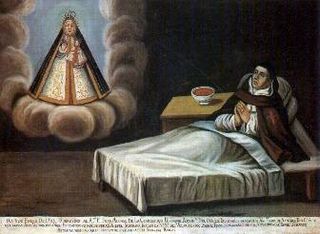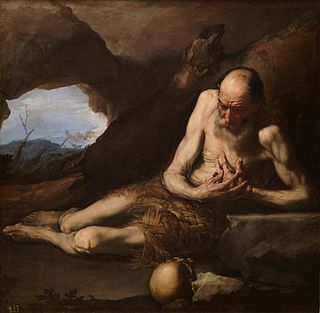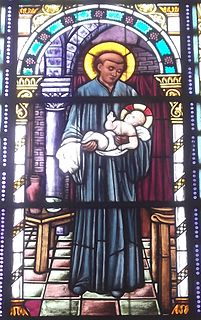Macedonius the Hermit , sometimes known as Macedonius Kritophagus, lived at the turn of the fourth to fifth century in Byzantine Syria. He is venerated as a saint in the Eastern Orthodox Church, with a feast day of January 24. [1]
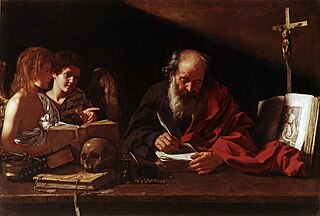
A hermit is a person who lives in seclusion from society, usually for religious reasons. Hermits are a part of several sections of Christianity, and the concept is found in other religions as well.

The Eastern Orthodox Church, officially the Orthodox Catholic Church, is the second-largest Christian church, with approximately 200–260 million members. It operates as a communion of autocephalous churches, each governed by its bishops in local synods, although roughly half of Eastern Orthodox Christians live in Russia. The church has no central doctrinal or governmental authority analogous to the Bishop of Rome, but the Ecumenical Patriarch of Constantinople is recognised by all as primus inter pares of the bishops. As one of the oldest religious institutions in the world, the Eastern Orthodox Church has played a prominent role in the history and culture of Eastern and Southeastern Europe, the Caucasus, and the Near East.
Macedonius began his ascetic life as a pilgrim wandering from city to city in Syria, Phoenicia, and Cilicia, living entirely on barley moistened with water (hence Kritophagus, "barley-eater"). Eventually he settled in the wilderness, far from human contact, taking shelter in a pit. He considered food a form of medicine that could be taken to stave off death because it is not lawful to "shorten one's life to shun labors and conflicts". [2]
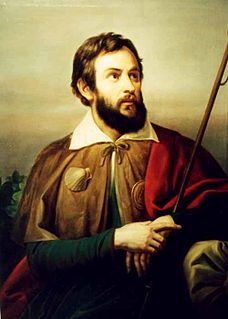
A pilgrim is a traveler who is on a journey to a holy place. Typically, this is a physical journey to some place of special significance to the adherent of a particular religious belief system. In the spiritual literature of Christianity, the concept of pilgrim and pilgrimage may refer to the experience of life in the world or to the inner path of the spiritual aspirant from a state of wretchedness to a state of beatitude.

The Phoenicia under Roman rule relates to the Roman control of Syro-Phoenician city states, that lasted from 64 BC to the Muslim conquests of the 7th century.

Cilicia was an early Roman province, located on what is today the southern (Mediterranean) coast of Turkey. Cilicia was annexed to the Roman Republic in 64 BC by Pompey, as a consequence of his military presence in the east, after pursuing victory in the Third Mithridatic War. It was subdivided by Diocletian in around 297, and it remained under Roman rule for several centuries, until falling to the Islamic conquests.
Macedonius became well known to people far and wide for his holiness and gifts of healing and exorcism. Gradually multitudes of people came to seek his direction and intercession. Only at a very advanced age did he agree to live in a cell provided for him. He died circa 420 at seventy years of age.

Exorcism is the religious or spiritual practice of evicting demons or other spiritual entities from a person, or an area, that are believed to be possessed. Depending on the spiritual beliefs of the exorcist, this may be done by causing the entity to swear an oath, performing an elaborate ritual, or simply by commanding it to depart in the name of a higher power. The practice is ancient and part of the belief system of many cultures and religions.
Intercession or intercessory prayer is the act of praying to a deity on behalf of others. In Western Christianity, intercession forms a distinct form of prayer, alongside Adoration, Confession and Thanksgiving.




